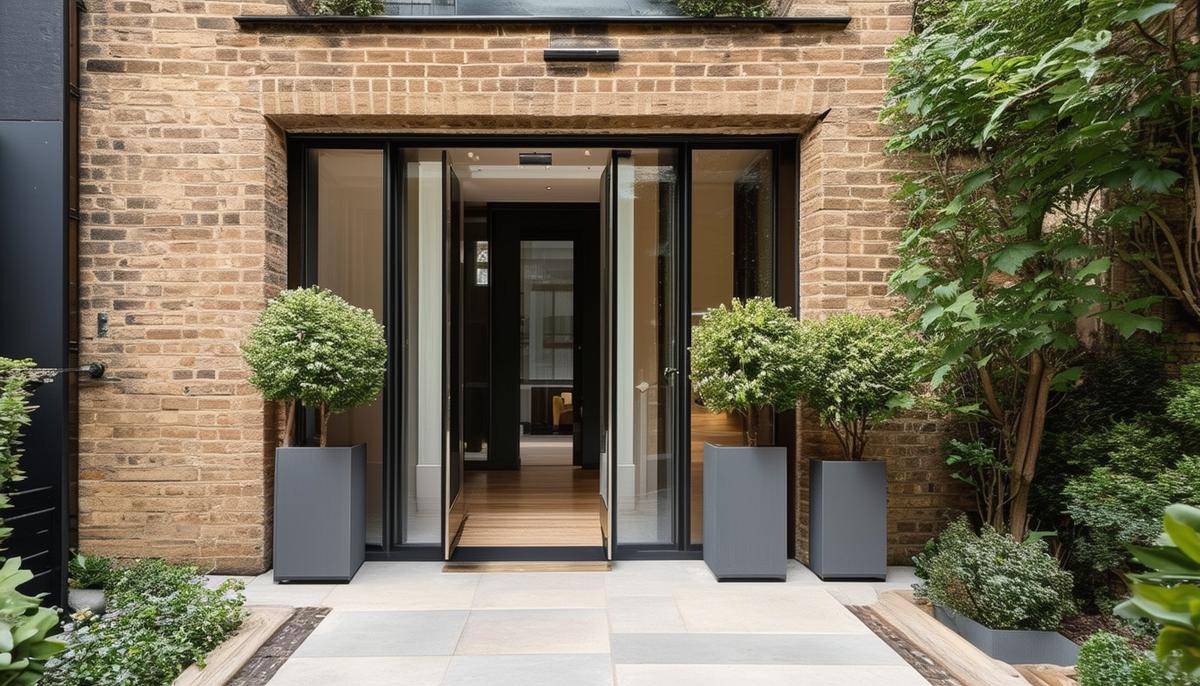Maisonette Characteristics
A maisonette in the UK captures a unique blend of privacy and communal living, nestled neatly between a conventional flat and a private house. Primarily defined by their two or more storied structures within a larger building, maisonettes bring an intriguing architectural twist to residential properties.
Each maisonette boasts its own private entrance, which contrasts sharply with flats accessed via shared corridors or entries. This feature significantly elevates the level of privacy residents experience, mimicking the feel of entering a standalone house.
One of the most compelling features of a maisonette are the minimal shared areas. Unlike typical flats that may have several communal spaces, maisonettes often enjoy private amenities—these might include:
- Personal gardens
- Exterior spaces
The exclusivity of these features contributes not only to a sense of privacy but also enhances enjoyment and usability of outdoor areas.
Structurally, maisonettes vary, often adapting to the existing building they are part of. Commonly, they are formed by subdividing larger houses or buildings into multiple, self-contained living spaces that stretch over several floors.
The multifloored nature of maisonettes also introduces dynamic interior layouts compared to single-storied flats. Having separate floors within the unit allows for a clear distinction between living and private quarters—generally, bedrooms are situated upstairs away from the main living and entertaining areas, contributing an additional layer of privacy.
The private entrances significantly contribute to enhancing security and reducing noise pollution. Residents typically benefit from fewer disturbances coming from neighbors passing by, a virtue not easily found in flats that share access routes.1 These factors collectively make maisonettes an appealing choice for those desiring the amenities and feel of a house but situated in urban zones where detached houses can be scarce and pricy.

Ownership and Maintenance
In the domain of maisonette ownership, two primary types exist: leasehold and freehold, both carrying distinct implications regarding ownership rights and duties.
With a leasehold maisonette, ownership pertains to the right to inhabit the property for a predetermined period as specified in the lease. This duration can extend to many decades or even centuries, offering long-term residence stability, though not unequivocal ownership. The lease outlines rights and responsibilities, detailing everything from maintenance obligations to restrictions on property modifications and even pet ownership. One significant financial aspect often tied to leasehold properties is ground rent—a periodic payment made to the freeholder as stipulated in the lease.
Leaseholders might also encounter service charges. These fees are collected to manage and maintain common parts of the property and shared services such as:
- Roofs
- Foundations
- External walls
These are typically the responsibility of the freeholder or designated management company. Thus, while the interior decor and internal repairs fall squarely on the shoulders of the leaseholder, more extensive external maintenance demands collaboration and compliance with the property's overarching managing entities.
Conversely, owning a maisonette as a freehold brings a degree of autonomy unattainable with leasehold arrangements. Freeholders own the structure outright, including the land upon which it sits, granting them full control over their property both inside and out—subject, naturally, to local planning laws and regulations.2 This empowerment comes with the caveat of comprehensive responsibility: the freeholder is solely responsible for both the upkeep of building exteriors and the management of any shared spaces. This could include a spectrum of tasks from routine gardening to significant structural repairs.
Financial considerations interestingly shift when comparing leasehold to freehold. Although freeholders avoid ground rents and some types of service charges typical of leaseholds, they must budget for all home maintenance ventures without the financial support that a collective leasehold arrangement might offer. Major repairs necessitate substantial capital, and unforeseen expenses can arise, underscoring the importance of careful financial planning.
In summary, maisonettes offer a distinct living experience that combines the privacy of a house with the convenience of urban living. Whether one opts for a leasehold or freehold maisonette, it's important to carefully consider the financial and maintenance responsibilities that come with each type of ownership.
Get top-notch content effortlessly with Writio's AI writing service. This article was written by Writio.
- Özdemir Sarı ÖB, Özgüner Ö, Uzun N. Resident satisfaction for sustainable urban regeneration. Proceedings of the Institution of Civil Engineers – Municipal Engineer. 2015;168(4):220-234.
- Blandy S, Dixon J, Dupuis A. Theorising power relationships in multi-owned residential developments: unpacking the bundle of rights. Urban Studies. 2006;43(13):2365-2383.
Leave a Reply